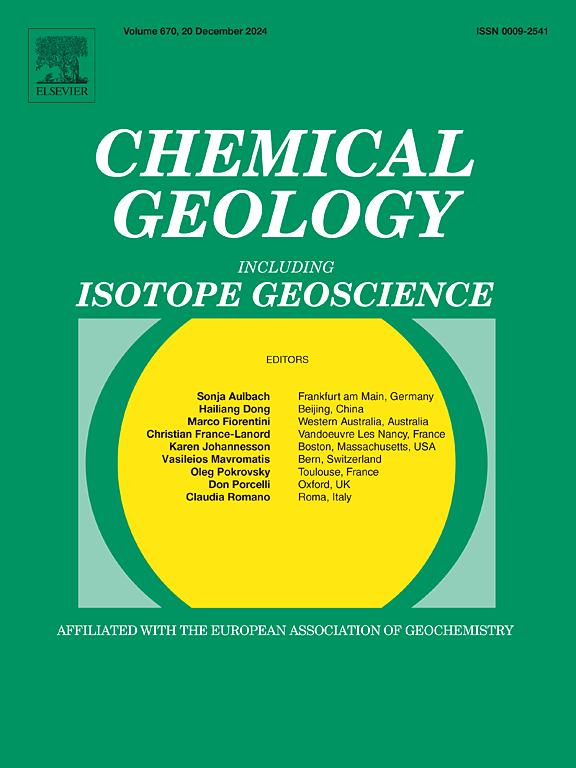Utility of the B/Ga salinity proxy in carbonate and marly sediments
IF 3.6
2区 地球科学
Q1 GEOCHEMISTRY & GEOPHYSICS
引用次数: 0
Abstract
Elemental proxies are widely used for analyzing watermass salinity in ancient shale and siliciclastic mudstone formations, but their application to limestones and marls has not yet been systematically tested. Unlike the Sr/Ba and S/TOC proxies, the B/Ga proxy offers considerable, albeit untested, potential for paleosalinity determinations in carbonate-bearing facies. To evaluate this potential, we analyzed the concentrations of B and Ga, as well as those of Al, Ca, and other lithology-associated elements, in a large suite of modern and ancient marine and marine-influenced carbonate samples, including both sediments and fossils. Our results show that B/Ga ratios tend to be elevated in carbonate-rich material due to low concentrations of Ga, which is primarily present in the detrital siliciclastic fraction. In marly sediments, robust salinity facies determinations are generally possible for samples with Ga concentrations as low as 3 ppm, compared to the typical range of 15–20 ppm in shales. For carbonate samples with Ga concentrations <3 ppm, reliable salinity facies estimates may still be obtained using excess boron (Bxs) present in the sample, calculated as Btotal – 6 × Ga. Excess boron content is typically ∼10–20 ppm for carbonates from fully marine facies. Deviations from this range may signal watermass salinities that are lower or higher than the normal marine salinity range of ∼33–38 psu (practical salinity units). This study establishes, for the first time, a robust framework for evaluating depositional salinities in ancient marine and marine-influenced carbonate and marl formations, providing a valuable tool for future paleoenvironmental research.
求助全文
约1分钟内获得全文
求助全文
来源期刊

Chemical Geology
地学-地球化学与地球物理
CiteScore
7.20
自引率
10.30%
发文量
374
审稿时长
3.6 months
期刊介绍:
Chemical Geology is an international journal that publishes original research papers on isotopic and elemental geochemistry, geochronology and cosmochemistry.
The Journal focuses on chemical processes in igneous, metamorphic, and sedimentary petrology, low- and high-temperature aqueous solutions, biogeochemistry, the environment and cosmochemistry.
Papers that are field, experimentally, or computationally based are appropriate if they are of broad international interest. The Journal generally does not publish papers that are primarily of regional or local interest, or which are primarily focused on remediation and applied geochemistry.
The Journal also welcomes innovative papers dealing with significant analytical advances that are of wide interest in the community and extend significantly beyond the scope of what would be included in the methods section of a standard research paper.
 求助内容:
求助内容: 应助结果提醒方式:
应助结果提醒方式:


